The V&A (formerly Victoria and Albert Museum) in the UK is one of the leading museum groups on the British isles and an international cultural brand. It comprises the V&A Museum at South Kensington, the V&A Museum of Childhood at Bethnal Green, and its archives and stores at Blythe House, Kensington Olympia. Like many British museums, all V&A museums provide free entry to visitors.
First opened in 1852 and named after Prince Albert and Queen Victoria, the V&A has a massive permanent collection of over 4.5 million objects. Its flagship museum at South Kensington has since grown to now cover 12.5 acres (51,000 m2) and 145 galleries, and is touted as the “world’s greatest museum of art and design, with collections unrivalled in their scope and diversity”. Visitors to V&A at South Kensington can uncover 3000 years of cultural treasures gleaned from many of the world’s richest cultures. They include ceramics, furniture, fashion, glass, jewellery, metalwork, photographs, sculpture, textiles and paintings.
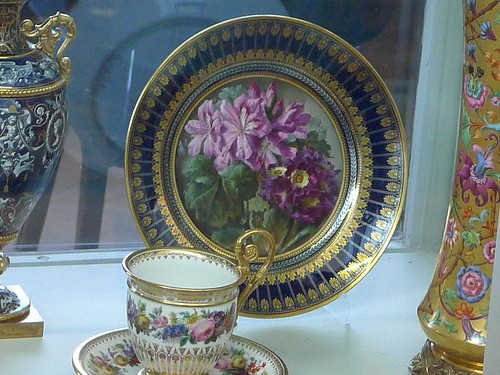
This plate is the oldest ceramic piece in the V&A’s collection
Helmed by its charismatic director Sir Mark Jones (who incidentally had a stint at Singapore’s National Museum way back in the past), the V&A drew some 2.3 million visitors a year and is the 7th most visited museum in the UK. To strengthen attendance figures, the V&A curates an exciting calendar of exhibitions, and organises targeted events appealing to different visitor groups such as its popular Fashion in Motion series.
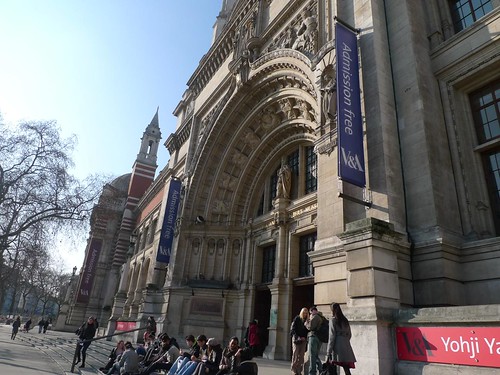
Free admission is a great draw for tourists and locals alike, and this is proudly emblazoned on the V&A’s outdoor banners.

This spectacular Chihuly crystal chandelier and ultra-chic information counter sets the mood at the lobby.
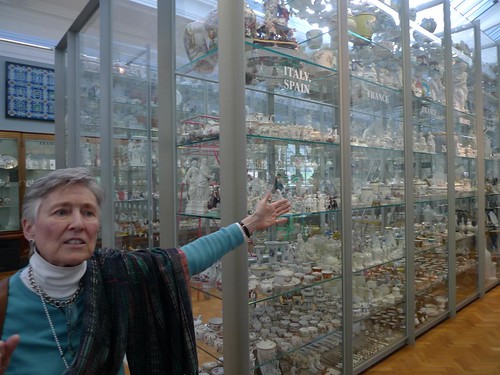
A knowledgeable docent pointing out the open-storage system at the V&A. This allowed the museum to showcase as many of its artefacts as possible in a space-economical fashion.
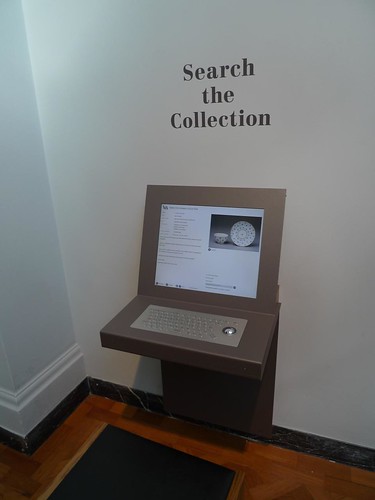
Those who prefer to search for ‘treasures’ online can do so at these terminals.
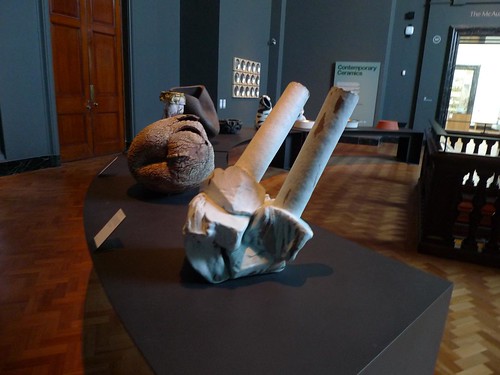
Exhibits are thoughtfully displayed with sufficient space for visitors to walk around them. Oh yes, you can also take photographs of them (no flash of course).

Information panels written in simple, easily understood language educate visitors on the steps involved in pottery making.
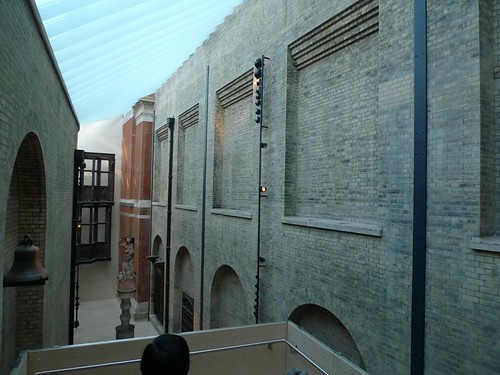
I love this view of an old preserved wall of the museum. Its modern extension was thoughtfully built to allow good visibility and line-of-sight of its various spaces.
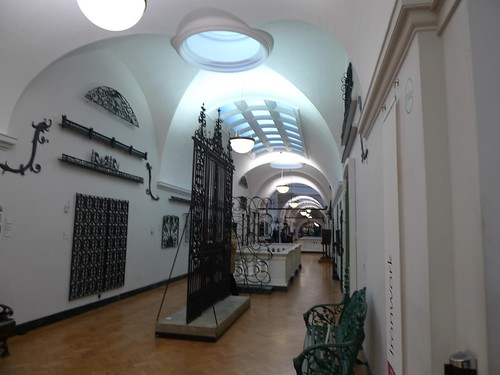
Corridor spaces are put to good use at the V&A. With 4.5 million items, you do need every square feet to showcase your cultural wares!

One can also view the working spaces of the conservators at the museum, with its open working environment. It helps that they’re pretty neat in their work. 🙂

This lady was taking down the fine details of a pair of marble statues.
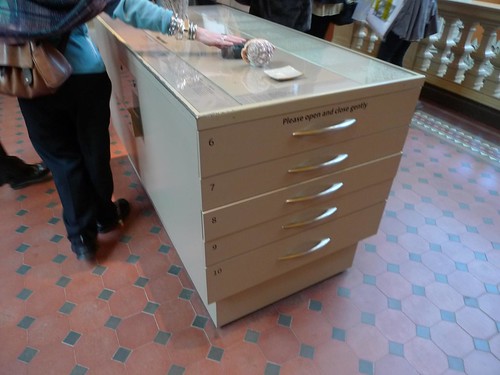
Handleable items like these allow visitors to touch and feel selected museum exhibits, while drawers provide spaces to keep and display artefacts.
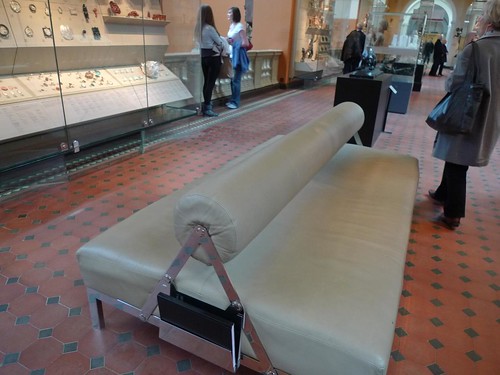
As a huge museum covering 51,000 sq m in area, chairs like these provide much needed relief.
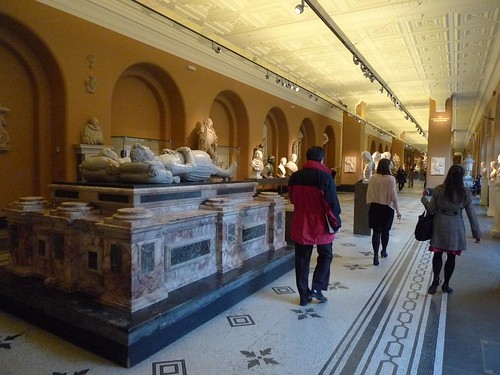
A view of a gallery space. The easy visibility and openness of the gallery spaces are a boon for visitors navigating its cavernous interior.
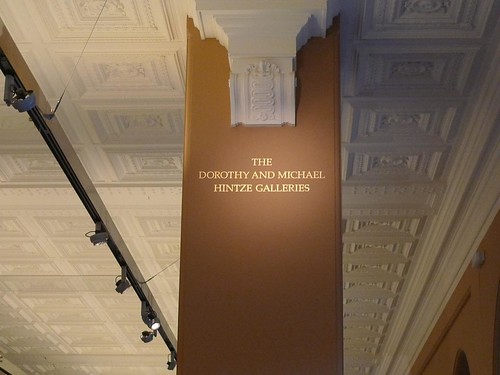
Cultural philanthropy is an important component of museum funding in the UK. I like how discrete these gallery namings were.
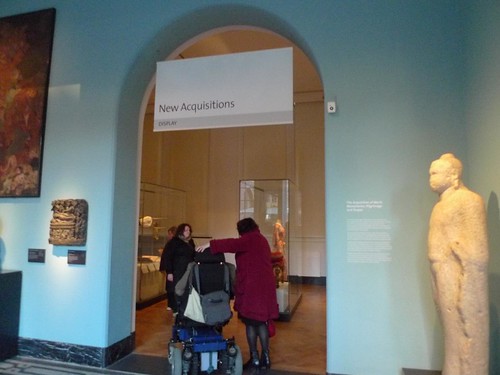
Want to know what’s new? Check out its new aquisitions in this space. Great for repeat visitors.
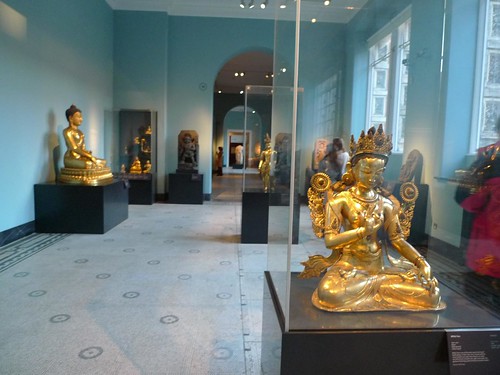
For pricier items, glass showcases like these are important. I also like how the museum used natural light to supplement its artificial lighting systems.
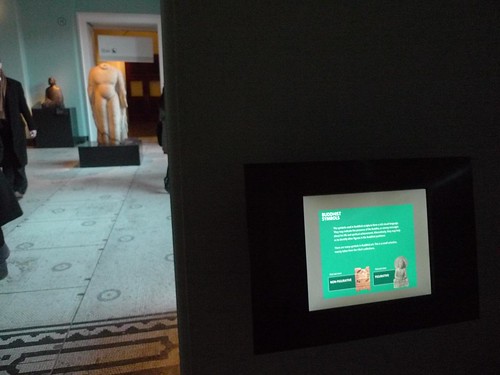
Interactive information screens like this one here are a must in most modern museums.
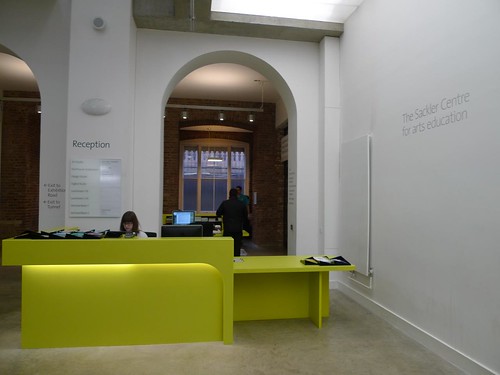
Art education is a key priority for the V&A, as seen in this dedicated centre sponsored by the Sackler foundation. The place was buzzing with avid ‘students’ from all ages when I was there.
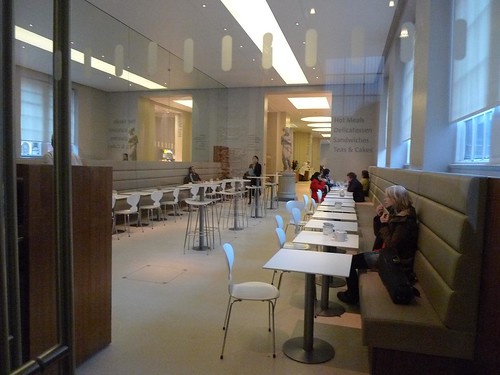
Grab a sandwich, coffee or a pasta at the museum restaurant, a necessity to replenish your mental juices after absorbing all that knowledge!
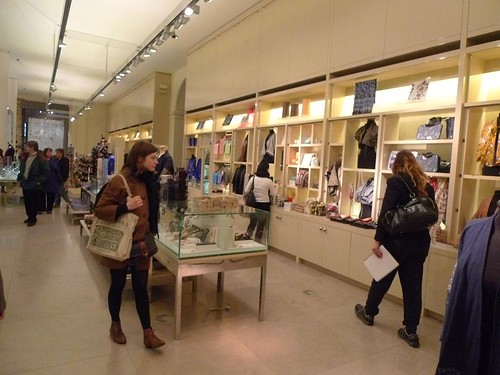
The V&A shop was a remarkable retail paradise, with goods ranging from clothes, handbags, jewellery and books. In fact, the V&A is the world’s leading licensed museum brand.

As we were leaving the museum, this DJ was revving up the decks in preparation for the V&A’s Friday Late nights. Apparently, they draw some 6,000 visitors from 6 pm to 10 pm alone. What a great way to chill out to culture!

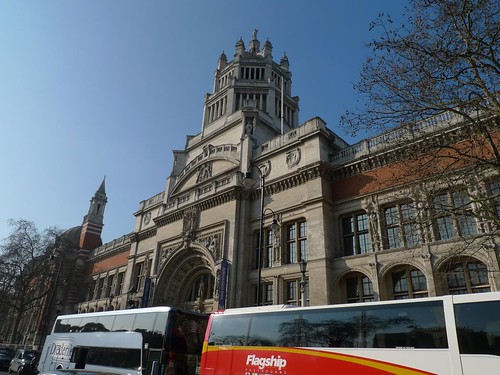
So you think the free-admission thing will work for NHB museums? I hate to think that there are some Singaporeans that NHB museums cannot entice simply because of the entry fees!